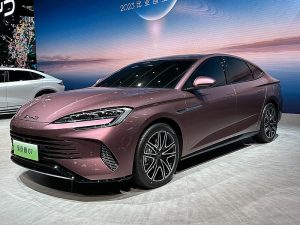Beijing is beginning to reap the rewards of decades of deliberate industrial policy directed at accruing strategic resources plentiful across the Global South. This is the lesson of the remarkable news that, this year, China has surpassed Japan as the world’s largest exporter of automobiles.
Halfway through 2023, China has exported over 2.5 million cars, a 42.4 percent increase over last year. Electric vehicles (EVs) account for nearly 40 percent of these exports, according to Chinese customs data. Notably, a third of China’s auto exports were shipped to other Asian countries, especially developing nations to China’s south.
This is significant because for decades Southeast Asian nations have supplied China with the material inputs critical to Beijing’s world-class EV production today. Now they are becoming some of China’s top customers for the finished product.
Growing automobile trade with Southeast Asia has all the makings of a “circular” economy that will deepen regional integration and serve to bring these fast-growing nations more closely into China’s orbit.
Automobiles are among the most treasured of export categories. They can underpin a nation’s export economy and propelled Germany and Japan to advanced industrial status.
Southeast Asian customers clearly appreciate that China now possesses leading EV technology for personal automobiles, and Beijing’s carmakers are poised for new breakthroughs. Chinese scientists recently demonstrated the feasibility of lithium zirconium oxychloride solid-state EV batteries, which survive more charges than the industry-standard lithium-ion liquid medium batteries.
China’s emerging dominance in electric vehicles, especially its competitive strength in Southeast Asia, is a function of a deliberate strategy to accrue the mineral stores of its resource-rich neighbors. As early as 1999, Chinese Communist Party (CCP) leaders began encouraging Chinese firms to invest overseas and supported efforts to dramatically expand the footprint of Chinese “national champions” abroad once the domestic market for certain goods and services reached maturity.
As Beijing’s “national champions” went out abroad in search of business, the Chinese economy – with its flourishing industrial sector – began to demand the oil, minerals, and agricultural products necessary for industrial growth. To meet the resource demands of an economy of China’s size, Chinese development banks financed the construction and operation of mines and factories that extract and process critical industrial inputs such as copper, bauxite, iron ore, and aluminum across the Global South.
In recent years, Chinese development banks have funded projects in Africa, Latin America, and Southeast Asia that have significantly advanced China’s access to strategic resources essential for EV production specifically. In 2014, a Chinese firm built a nickel smelting factory in Indonesia. In 2015, a Chinese mining company secured distribution rights to ionic clay rare earth mining in Chile; a different Chinese firm acquired the rights to lithium deposits in 2019. In 2016, a Chinese company purchased the Congo’s largest cobalt mine from an American mining conglomerate. Chinese development banks supported these and similar projects in deliberate and calculated ways, outbidding Western rivals and, on occasion, buying strategic assets off American owners.
The accumulation of these strategic commodities was an essential precondition for China’s dominance in EV exports today. The raw materials from these Chinese state-owned mines are critical inputs for the industrial equipment, machine tooling, and advanced batteries that make Chinese EV manufacturing possible. Today, the EU estimates that more than 50 percent of the raw materials needed to produce electric motors are supplied by China.
The same nations that supplied raw materials critical to China’s EV industry are now poised to reap the benefits of China’s auto exports. Mirroring the automobile export data, recent Chinese customs data indicates a 35 percent increase in China’s overall exports to Southeast Asia. Port volumes reflect this new reality too. Thailand was among the top destinations for Chinese electric vehicle exports in the first quarter. On the other hand, only three countries in Europe were among the top 10 auto export destinations for China in 2022. The Chinese export juggernaut is continuing to grow, with notably increasing market shares outside of European markets.
In this way, China’s EV export boom is helping Beijing pursue a higher objective: to facilitate deep economic entanglement with the fast-growing Global South, in the hope that commercial exchange begets political influence among key “persuadable” countries, such as the 10-member ASEAN grouping. Ultimately, the emergence of China’s EV automobile industry is just one example of a trend toward a China-centric integrated regional economy in Asia that could one day lessen the blow of any future program of U.S.-led anti-China sanctions.
It is also further proof that Beijing’s industrial policy is paying off as a matter of geoeconomic statecraft, not just international development economics. The accrual of raw materials, the pursuit of new markets and new economic entanglements, and the creation of a durable anti-sanctions bulwark are all interconnected developments that are beginning to put China at the center of a new geoeconomic order.
































